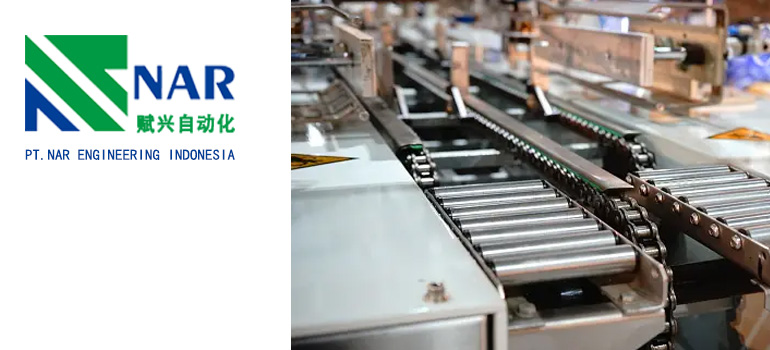Summary:
Optimal conveyor chain: ensuring smooth and unobstructed production process
The role and importance of conveyor chains
Choose the appropriate conveyor chain
Maintenance and upkeep of conveyor chains
Dealing with common problems and solutions
In modern manufacturing and logistics, conveyor systems are a crucial component to ensure efficient operation of production and logistics processes. As an important accessory in the conveyor system, the conveyor chain is directly related to the stability and reliability of the entire system. This article will delve into conveyor chains and focus on how to choose and maintain high-quality conveyor chains to ensure smooth and unobstructed production processes.

The role and importance of conveyor chains
The conveyor chain is one of the key components connecting the drive device and conveyor belt in the conveyor system. It transmits power through a sprocket, allowing the conveyor belt to continuously move throughout the entire system. The correct selection and use of appropriate conveyor chains are crucial for ensuring efficient operation of the conveyor system. Its main functions are reflected in the following aspects:
Power transmission: The conveyor chain effectively transmits the power of the driving device through the coordination with the sprocket, driving the conveyor belt to move and achieving smooth material transportation.
Carrying materials: The conveyor chain needs to bear the weight of the materials carried on the conveyor belt, so its strength and wear resistance directly affect the operational stability of the entire conveyor system.
Maintaining tension: By designing and adjusting the chain correctly, the tension of the conveyor belt can be maintained to prevent looseness or over tension, thereby extending the service life of the chain and conveyor belt.
Choose the appropriate conveyor chain
Chain types: There are various types of conveyor chains, including roller chains, plate chains, chain plate belts, etc. It is crucial to choose the appropriate chain type based on specific application requirements. Different types of chains are suitable for different working environments and material conveying requirements.
Material selection: The material of the conveyor chain affects its wear resistance and corrosion resistance. Common chain materials include stainless steel, alloy steel, and plastic. Select chains with suitable materials based on the working environment and the characteristics of the transported materials to improve their service life.
Strength and size: The strength and size of the conveyor chain need to be selected based on the load and speed requirements of the conveyor system. A chain that is too weak may cause breakage, while a chain that is too strong may increase the system’s burden. Ensure the selection of chains with appropriate strength and size to ensure the normal operation of the system.
Maintenance and upkeep of conveyor chains
Regular inspection: Conducting regular chain inspections is a key step in ensuring the normal operation of the conveyor system. Check the wear of the chain, the degree of wear of the sprocket, and the tension of the chain, promptly identify problems and repair or replace them.
Lubrication management: The conveyor chain needs to maintain good lubrication during operation to reduce friction and extend its service life. Choose an appropriate lubricant and lubricate it within the specified time, taking care not to overdo or overdo it.
Cleaning and maintenance: Avoid dust and impurities on the surface of the chain, regularly clean the chain to maintain its surface smoothness. During the cleaning process, the overall condition of the chain can be checked to promptly identify problems and take measures.
Dealing with common problems and solutions
Chain breakage: If a chain breakage is found, the machine should be stopped immediately to check the cause. Possible reasons include excessive load, chain wear, sprocket damage, etc. Repair or replace according to specific circumstances.
Chain slack: A loose chain may cause the conveyor belt to shift and operate unstable. By adjusting the tension of the chain to solve the problem, ensure that the chain maintains the appropriate tension.
Sprocket wear: Worn sprockets can affect the transmission effect of the chain. Timely check the wear level of the sprocket and repair or replace it as needed.
Choosing and maintaining appropriate conveyor chains is crucial for ensuring the normal operation of the conveyor system. By understanding different types of chains, selecting materials and sizes reasonably, conducting regular inspections and maintenance, the service life of chains and the entire system can be extended, and production efficiency can be improved. Maintaining the high quality and normal operation of conveyor chains will provide reliable logistics support for enterprises, ensuring smooth and unobstructed production processes.

